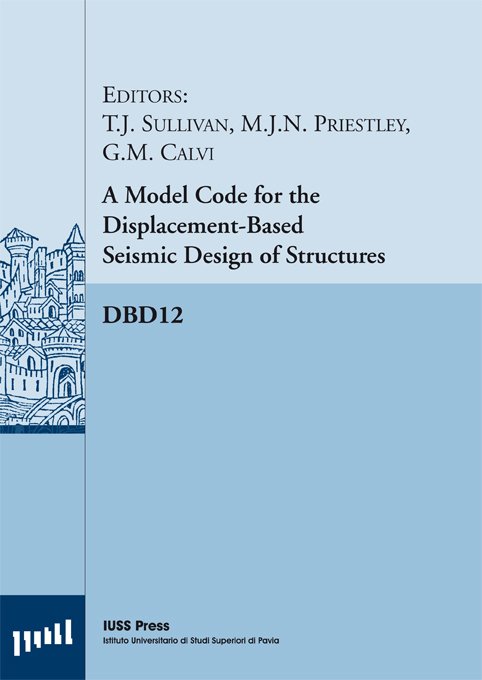Catalogue

Displacement-Based Seismic Design of Structures – 2nd Edition
18/06/2019
Principles of Passive Supplemental Damping and Seismic Isolation – 2nd Edition
14/06/2022A Model Code for the Displacement-Based Seismic Design of Structures DBD12
€ 5,00
Editors: T.J. Sullivan, M.J.N. Priestley, G.M. Calvi
This publication has been developed to provide guidance as to how the direct displacement-based design methodology can be codified. It is intended for insertion within the seismic requirements of a code, establishing how design forces can be obtained using a Direct Displacement-Based Design (DDBD) approach. The document has currently been prepared with reference to several clauses of Eurocode 8. This document is presented in a traditional “Code + Commentary” format, on a split two-column page. The commentary aims to generally clarify the code requirements and indicate references where the background and further discussion on the requirements can be found.
FUORI CATALOGO
This publication has been developed to provide guidance as to how the direct displacement-based design methodology can be codified. It is intended for insertion within the seismic requirements of a code, establishing how design forces can be obtained using a Direct Displacement-Based Design (DDBD) approach. The document has currently been prepared with reference to several clauses of Eurocode 8. This document is presented in a traditional “Code + Commentary” format, on a split two-column page. The commentary aims to generally clarify the code requirements and indicate references where the background and further discussion on the requirements can be found. The document is a revised version of the draft model code DBD09. The bulk of the text and requirements in this code have been developed from the recommendations provided in the book on DDBD by Priestley et al. (2007) and from research carried out following that publication, including developments made by Linea IV of the RELUIS project (www.reluis.it). Currently the model code has been prepared for a wide range of building structures and bridges. However, the model code does not yet cover all structural systems and materials. In addition, a number of novel recommendations have been proposed that are preliminary in nature because of the limited amount of experimental or analytical data on which they are based. Future versions of this document will therefore look to refine the current recommendations and extend the guidelines to encompass a more complete range of structural systems.

